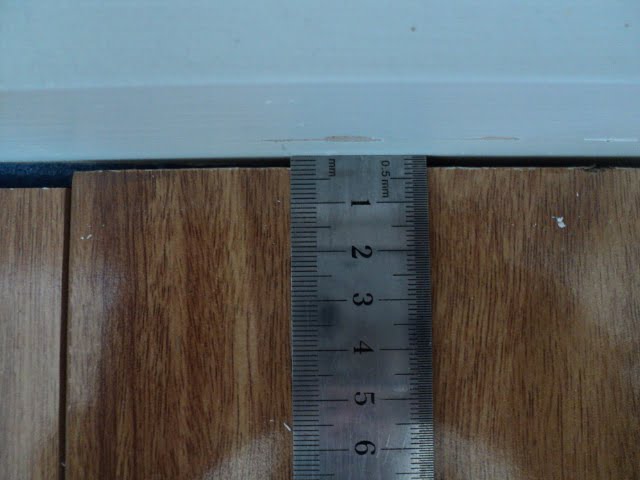Consumer access, price point and ease of installation have made laminate floating floor systems one of the most popular timber flooring options, despite floating floor installation failures continuing to rise annually. One might argue that the increase in floor failures is proportionate to the increase in sales, which might hold true if on investigation there were a broad range of contributing factors. However, investigations have identified one issue in particular: expansion gaps, or lack thereof, as the primary cause of floating floor failure.
There are essentially two types of expansion gap used in the installation of a floating floor: perimeter gaps and intermediate gaps. The sole purpose of both types of expansion gap is to allow the floor to expand and contract in response to atmospheric changes in the service area thereby preventing product stress and failure.
The width for a perimeter expansion gap ranges between 10 and 14 mm in depending on the product profile and manufacturer recommendation. However, perimeter expansion is often omitted, poorly constructed or resembles a saw tooth rather than a consistent channel.
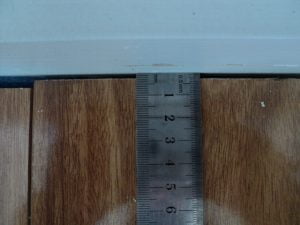
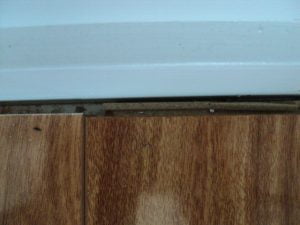
Laminate floors that are subjected to moisture ingress – such as changes in atmospheric conditions, spills and cleaning, etc. – expand laterally at a rate of 1 mm per metre in all directions. When this occurs under nominal conditions, the floor moves imperceptibly in and out of the expansion gap provided for this purpose. When board movement is inhibited because the expansion gap has been omitted or poorly formed, the floor will bind in doorways and against fixed obstacles such as walls and built in furniture. This can result in the floor queaking under foot fall, boards within the floor may peak and in extreme cases dome off the substrate. These symptoms are exacerbated in large areas or where the flooring is installed continuously from room to room through doorways or larger openings. This brings us to intermediate expansion joints.
The European Producers of Laminate Flooring Technical bulletin Installation of Laminate Floor Covering and the Australian Version code of Practise Installation of Laminate Flooring both assert that expansion joint profiles should be installed in consideration of the size and geometry of the floor surface. In practise this means that intermediate expansion gaps should be placed along the length and on occasion across the width of floors in areas that exceed 80 m² and that floating floors should not be installed continuously in large areas or from room to room through doorways or larger openings. Floors in adjoining areas should be separated from each other or other floorcoverings by an expansion profile which has been designed and fitted to cover and preserve the expansion gap.
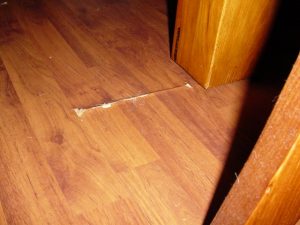
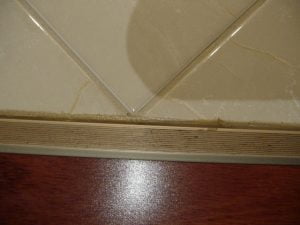
Forming expansion gaps around door openings is tricky and can result in an unsightly finish, hence the preferred method is to undercut the doorframe. This provides for the required expansion, while maintaining the appearance of continuous flow of the floor from one area to the next. In this scenario, expansion profiles are usually fitted so that they are covered by the door when it is closed. Metal doorframes are the exception to the rule and should never be undercut as they often form part of the structural integrity of the building.
Floating floor systems have been around since the mid-fifties, ever since that time installation practises have evolved to preserve and maximise the physical limitations and integrity of the products in service providing a basis for the forensic investigation of floor failures and the ability to determine the cause and necessary remediation of ongoing issues. Without exception omitted or poorly constructed expansion gaps can be categorised as an installation fault that occurs in part because the consumer has been allowed to control the installation over riding the manufacturer’s recommendations and to a lesser degree the installers who lack the knowledge and understanding of manufacturer’s instructions and best work practises essential to the long term integrity of floating floor installations.
Ray and Sharon Brice specialise in mediation training and project management. They have four decades of experience in the flooring industry.
Phone: 0407 591 697 | Email: rayandsharon@timbertradernews.com

